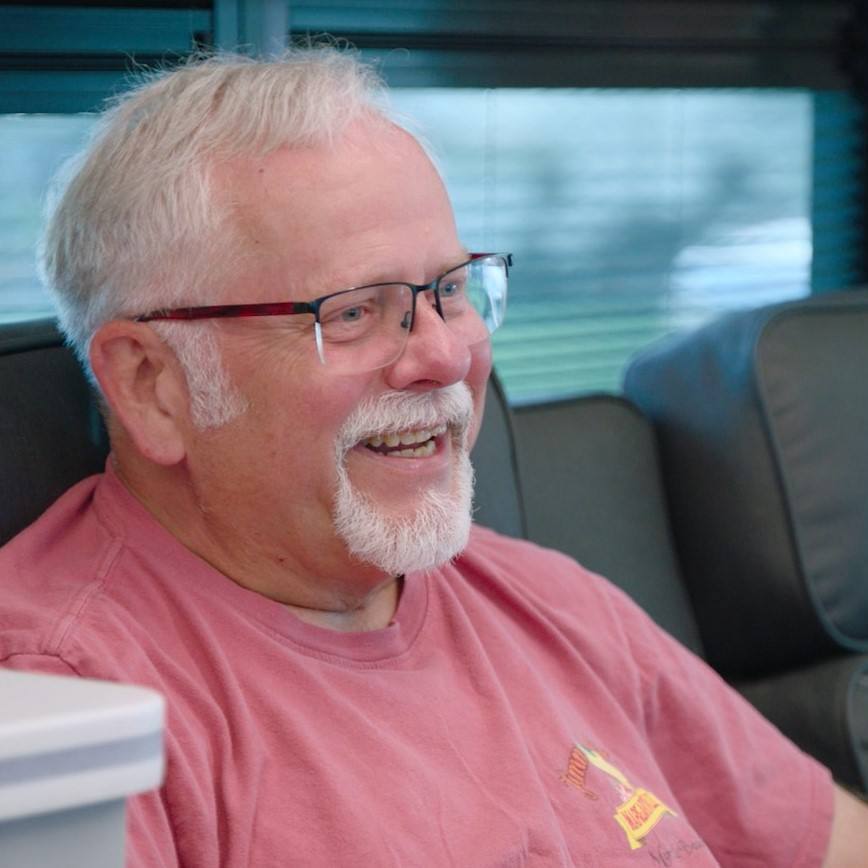
Employer-sponsored benefit brought him to Mayo Clinic
For James "Sonny" Rivera, his back was so painful that walking more than 200 yards or even standing was impossible at times.
Over the years, the 58-year-old Fort Dodge, Iowa, man experienced lower back pain that continued to increase in intensity. "The pain got so extreme that it limited the time I could be on my feet," Sonny says.
After a 2021 ATV accident, Sonny's back pain became severe — shooting from his right hip into his leg. From work to leisure activities, everything was adversely affected, he says, even sleeping.

"My back pain limited my ability to enjoy the activities I participate in," says Sonny, who has returned to his job and to coaching his grandchildren in wrestling after minimally invasive robotic spine surgery through the Mayo Clinic Complex Care Program.
Back pain is among the most common problems that cause people to seek help from a health care professional, says Mohamad Bydon, M.D., a Mayo Clinic neurosurgeon and editor of "Back and Neck Health: Mayo Clinic Guide to Treating and Preventing Back and Neck Pain." Musculoskeletal disorders also are associated with high costs to businesses worldwide — everything from medical costs, worker absenteeism, lost productivity, overutilization of spine surgery and inconsistent quality of spine care.
Complex Care Program
Through his employer, Sonny participated in a benefit that referred him to the Complex Care Program. The program offers patients with an abnormal MRI or a local health care professional's referral to receive an advanced spine review and care plan by Mayo spine experts. After Sonny's review, it was recommended that he travel to Mayo Clinic for evaluation and potential surgery.
"By removing the financial burden of travel and out-of-pocket expenses, the Complex Care Program helps employers democratize access to high-quality, high-value care for employees and dependents with complex medical needs," explains Lyell Jones Jr., M.D., a Mayo Clinic neurologist and medical director for Mayo Clinic Contracting and Payer Relations. "Our subspecialized experts work together to help the patient get the right diagnosis, the right treatment plan and achieve better outcomes, all while enabling the employer to offer a valuable benefit and achieve long-term cost savings for their health plan."
More than 9 million people have access to the Complex Care Program.
Conservative approach to spine care
Nearly 40,000 patient visits a year at Mayo Clinic are related to disorders associated with common spine surgeries. Experts in Mayo Clinic’s surgical spine center of excellence take a conservative approach to recommending and pursuing spine surgery. Only 11% of patients proceed to surgery at Mayo Clinic spine centers, located in Jacksonville, Florida; Rochester, Minnesota; and Phoenix.
"At Mayo, our model of care is multidisciplinary and individualized, such that each patient receives a plan optimized for their particular case," Dr. Bydon says. "With many spinal conditions, we most often begin with nonoperative measures, such as therapy, anti-inflammatory medications and injections. If those fail, we proceed to surgery."
Dr. Bydon is the Charles B. and Ann L. Johnson Professor of Neurosurgery and an expert in complex spinal surgery and spinal oncology.
Minimally invasive, robotic spine surgery
For Sonny's compressed nerves and spinal instability, Dr. Bydon performed robotic, minimally invasive spinal fusion surgery. While a typical fusion surgery requires a four-day hospital stay, the minimally invasive approach allowed Sonny to be discharged the day after surgery.
Research has shown that the use of robotics improves patient outcomes. "The high accuracy and the minimal invasiveness of robotic spine surgery are its two main contributions to patient care," Dr. Bydon says. "In the case of spine surgery, that means well-placed screws that serve as anchors to the rods, giving stability to the patient. The less invasive nature allows for small surgical wounds, minimal manipulation of the muscles that support the spine, and, therefore, quicker return to mobility for the patient and discharge from the hospital."
While Sonny says he was aware of Mayo Clinic's quality reputation before he was a patient, he still says he was "surprised by the professionalism of all aspects of the care," mentioning everyone from lab staff to nurses to the surgical team.
With recovery time, Sonny could walk and stand without pain in his right leg. He's looking forward to ice fishing this winter and returning to golfing and fishing in the spring. "Mayo’s team-based approach allows us to help patients get back to work and to the activities that they enjoy most," Dr. Bydon says.
Related Articles







